Let me tell you—after a long day of crawling under crawlspaces, fixing frames, or dealing with the mess of renovation projects, nothing feels better than collapsing into bed. But if your mattress is sagging or the support underneath isn’t cutting it, that blissful moment can turn into a nightly annoyance. That’s where a Bunkie board comes in. It’s not glamorous, but it might be the most underrated part of a good night’s sleep.
I’ve built and tested different mattress bases over the years, and honestly, a Bunkie board hits the sweet spot between function, price, and simplicity. Whether you’re upgrading your bed frame or starting from scratch, this guide walks through exactly what a Bunkie board is, why it matters, and how to make one yourself using good old plywood.
What Is a Bunkie Board?
A Bunkie board (some spell it “Bunky”) is a low-profile, sturdy panel that sits between your mattress and the bed frame. It was originally designed for bunk beds—hence the name—but has since become a favorite for platform beds, minimalist setups, and anyone ditching their creaky box spring.
Nowadays, mattresses—especially memory foam and hybrids—don’t need bounce from below. They need support. And most modern “box springs” aren’t springs at all. They’re just hollow wood frames. A Bunkie board does the job better with a lower profile and zero nonsense.
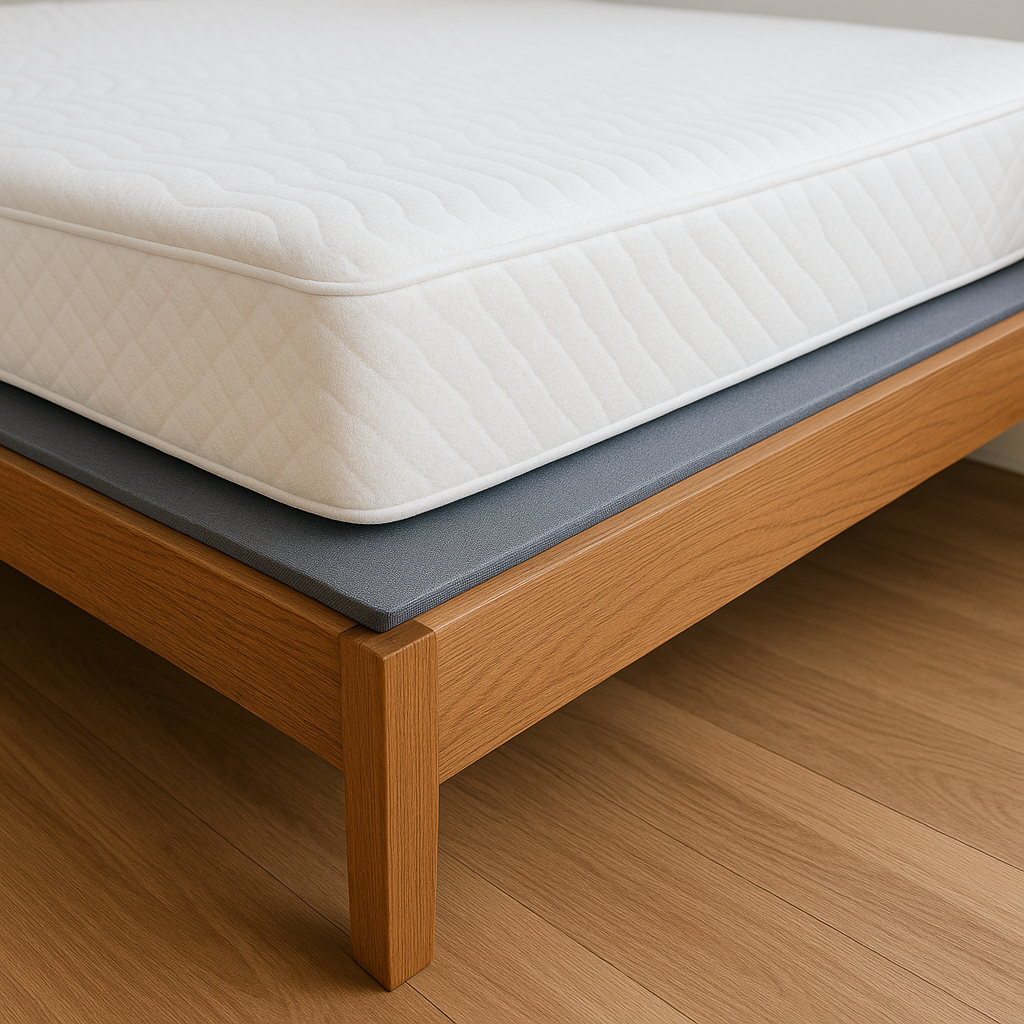
Why Choose a Bunkie Board Over a Box Spring?
- Lower bed height – great for modern rooms or short folks like me.
- Better support, especially for heavy foam mattresses.
- DIY-friendly – way cheaper and stronger if you make your own.
- No squeaks – solid wood boards don’t creak like metal springs.
📀 Amazon Pick: This quilted Bunkie board has decent reviews, but honestly, I’d build my own.
Store-Bought vs. DIY Bunkie Boards
Sure, you can buy a Bunkie board online. They’re usually MDF or particleboard, wrapped in some upholstery fabric. That’s fine—but not great. If you want something stronger, more durable, and built to last? Grab some plywood and get to work.
A few downsides of using raw plywood are:
- It’s not pretty (until you finish it)
- Splinters can snag your mattress if left unsealed
But those are easy to fix. Sand it, round the edges, maybe wrap it in batting and upholstery. And suddenly, it’s better than anything you’d buy off a shelf.
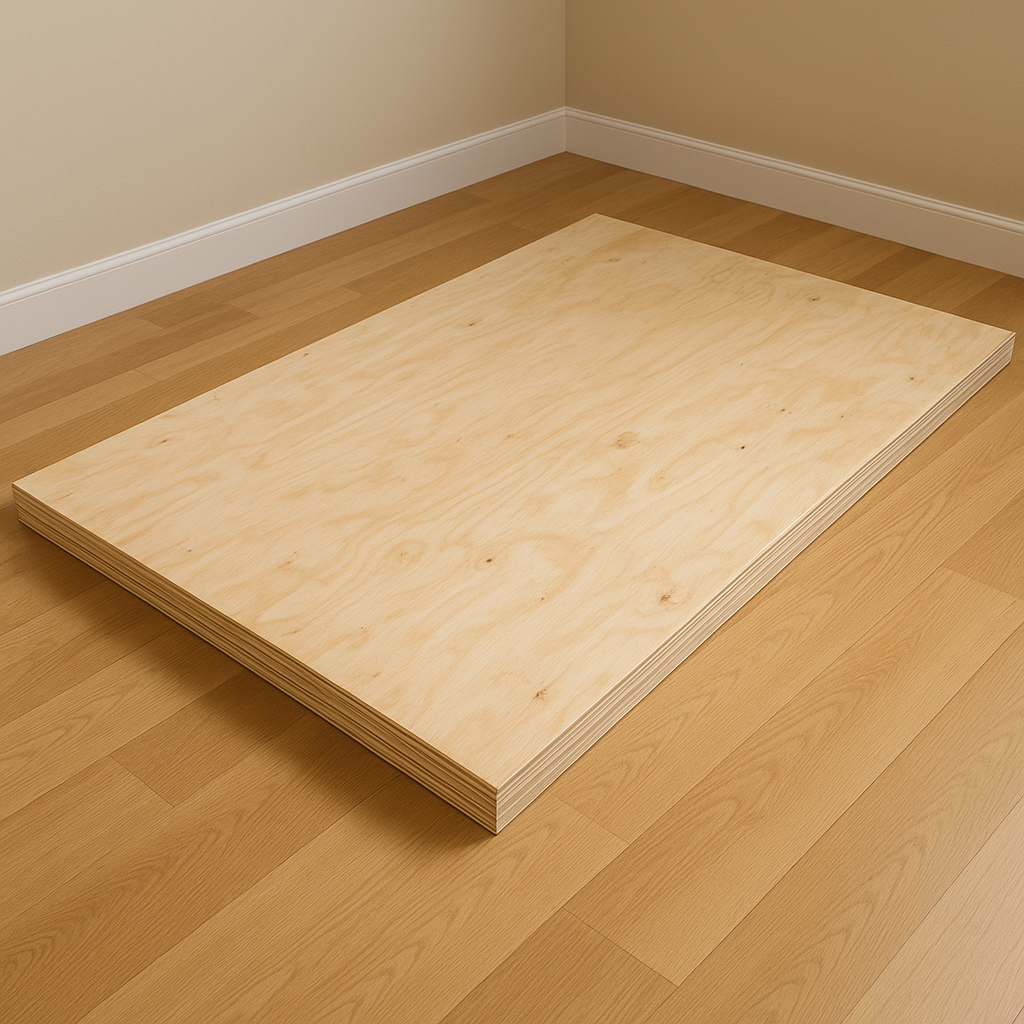
Choosing the Right Plywood
You don’t need marine-grade, furniture-grade, or any overkill. I stick with CDX—half inch or five-eighths. Here’s a quick cheat sheet:
| Material | Strength | Worth Using? | Notes |
|---|---|---|---|
| CDX Plywood | High | 👍 Yes | Tough and affordable |
| OSB | Medium | 👎 Not Ideal | Warps with moisture |
| MDF | Low | ❌ Nope | Too soft and heavy |
| Hardwood Ply | Very High | 😐 Overkill | Too pricey for under a mattress |
🔨 Tip: Half-inch works for twin or full sizes. Go thicker for anything bigger.
Mattress Sizes for Your Cut
| Mattress Size | Dimensions (inches) |
| Twin | 39” x 75” |
| Twin XL | 39” x 80” |
| Full | 54” x 75” |
| Queen | 60” x 80” |
| King | 76” x 80” |
| California King | 72” x 84” |
Measure your mattress twice before cutting—ask me how I know.
5 Ways to Build a Bunkie Board
1. Single Sheet (Twin or Twin XL)
If your bed’s small enough, a full sheet of plywood is all you need. Cut it to size, round the corners, and give it a good sanding.
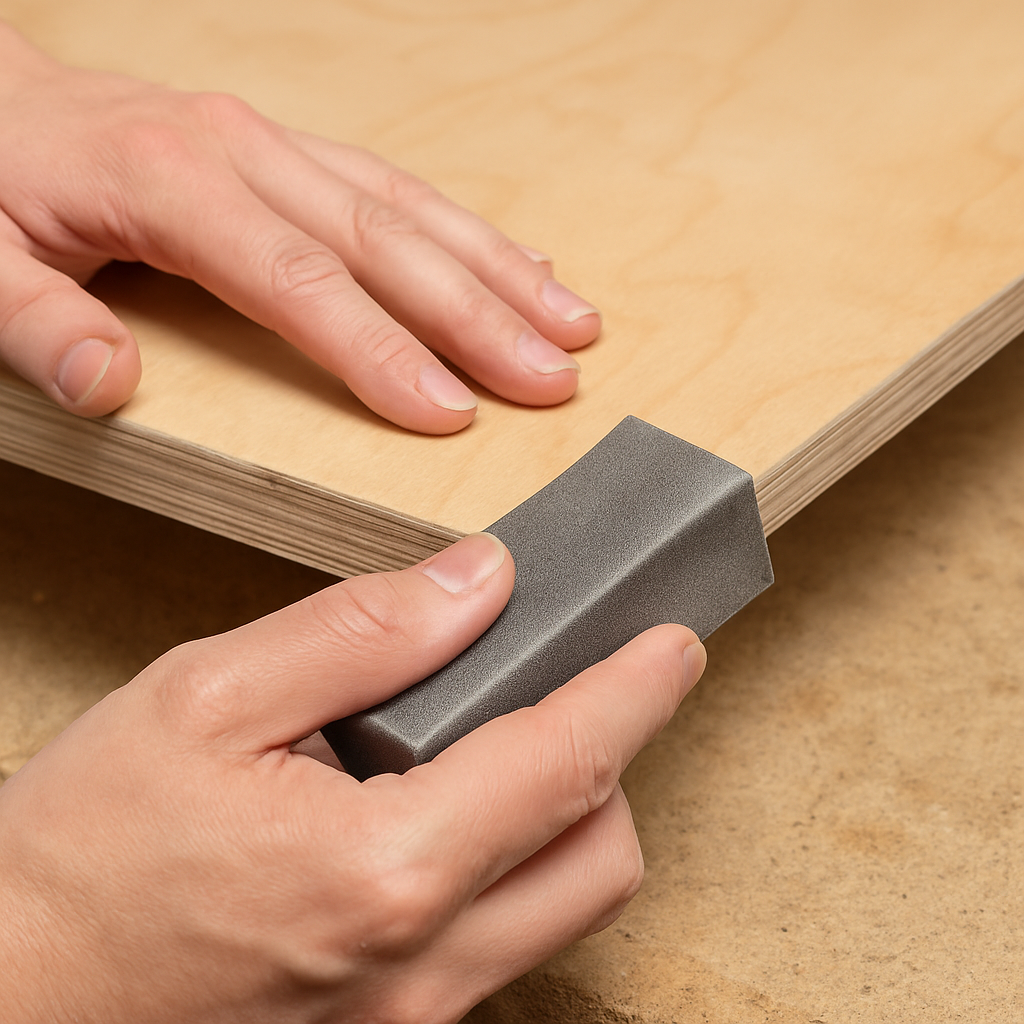
2. Double Layered (For Larger Beds)
For queens or kings, you’ll need two layers. Offset the seams, glue them together, and screw them down tight. Now you’ve got a rock-solid platform.
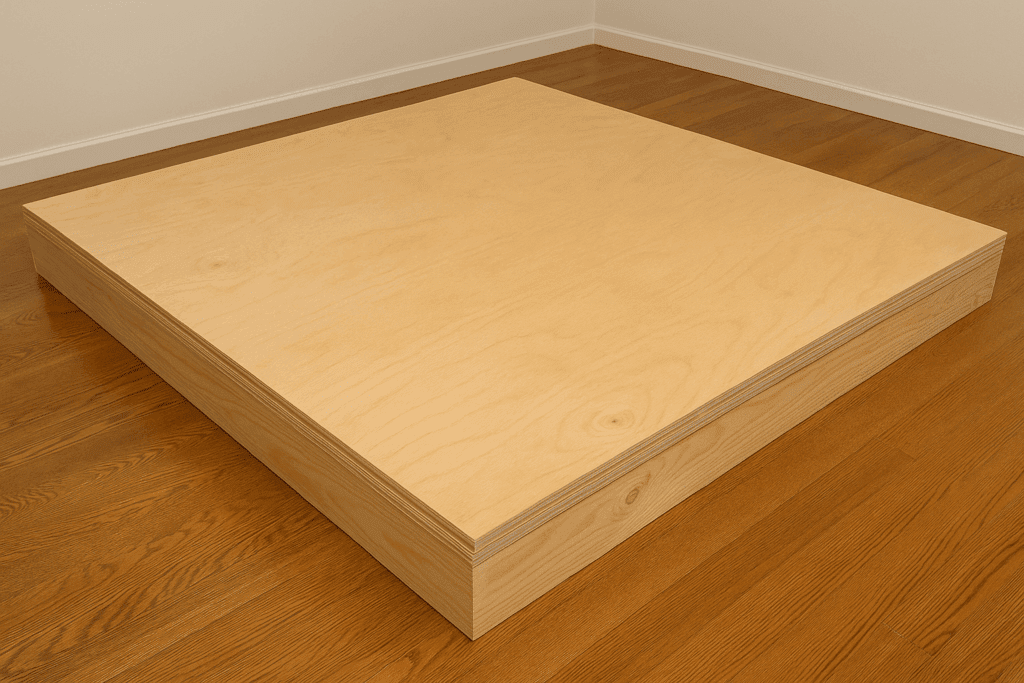
3. Hinged Fold-Over Style
Need to move it through tight spaces? Cut it in half and add a piano hinge. It folds like a book and still supports evenly.
4. Split Panels (King-Size)
Just like split box springs—make two halves. Especially handy if your bedroom door is a tight squeeze.
5. Slatted DIY Version
Rip plywood into 3–4” strips. Space them out on a frame and secure them with glue and brads. Wrap in batting and fabric if you like.
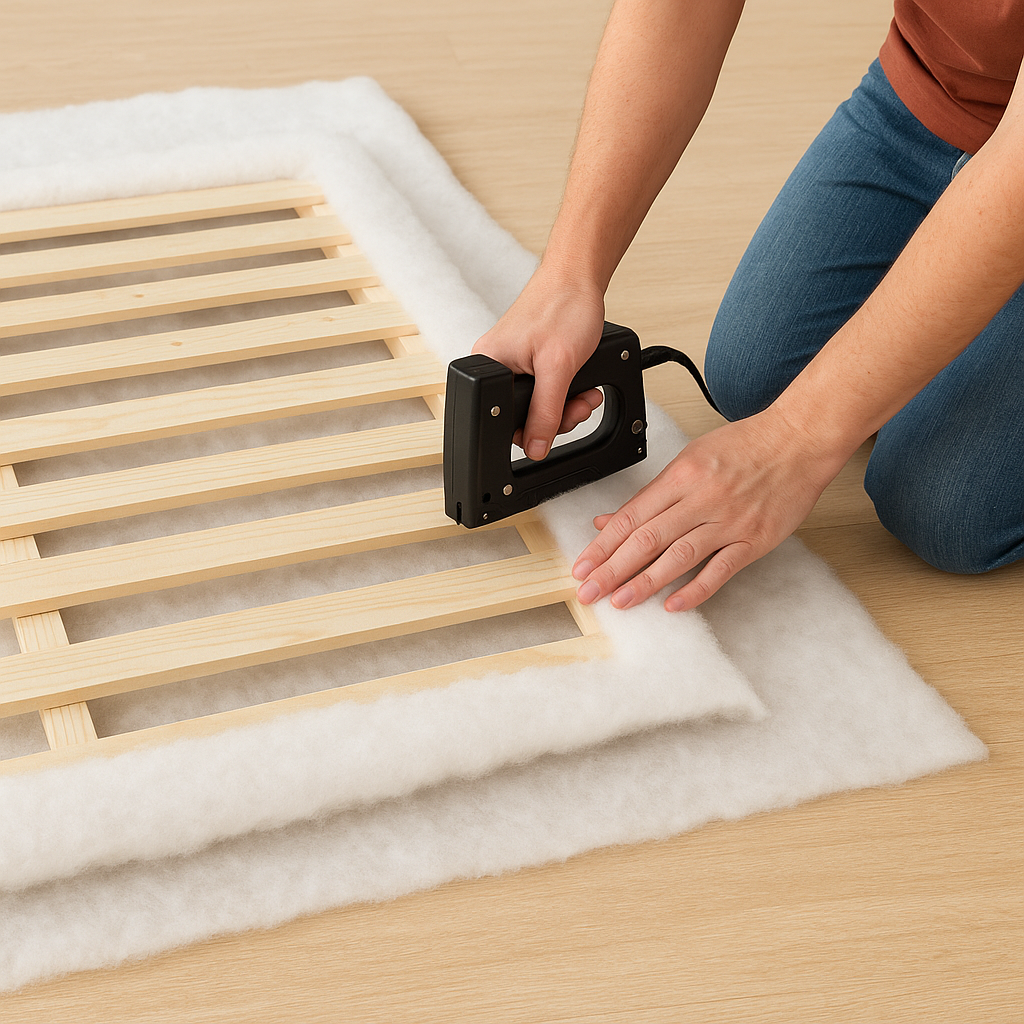
Upholstering the Board (Optional but Smart)
I’ve done this both ways. Bare plywood works, but wrapping it looks way better and keeps your mattress safe. Here’s how:
- Fill any cracks with wood filler
- Sand smooth and round the corners
- Add quilt batting with spray adhesive
- Cover the underside first
- Lay your top fabric face down, center the board on it
- Wrap fabric over the edges and staple underneath
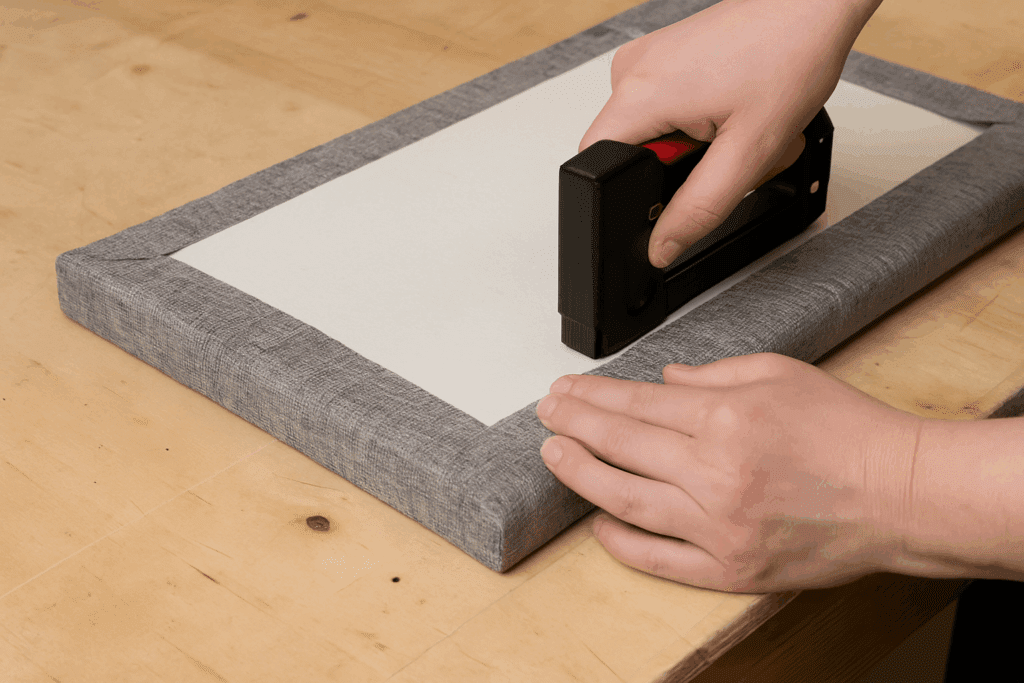
Does It Actually Help Your Mattress?
Yes—big time. I’ve had customers ask why their new $1,500 mattress was sagging after a year. The culprit? A weak base. Slats don’t always cut it. A flat, solid Bunkie board gives uniform support from edge to edge.
Plus, it helps with:
- Moisture: Acts as a barrier to floor humidity
- Wear: No dips or lumps
- Warranty: Many foam mattresses require a solid base
📌 Quick Fact: If your warranty says “use on flat surface only,” skipping a Bunkie board could cost you big.
Final Thoughts
Building your own Bunkie board is one of those simple, satisfying projects that pays off every night. It’s not flashy, but it works. All you need is the right plywood, a circular saw, a couple of hours, and maybe some music in the background.




